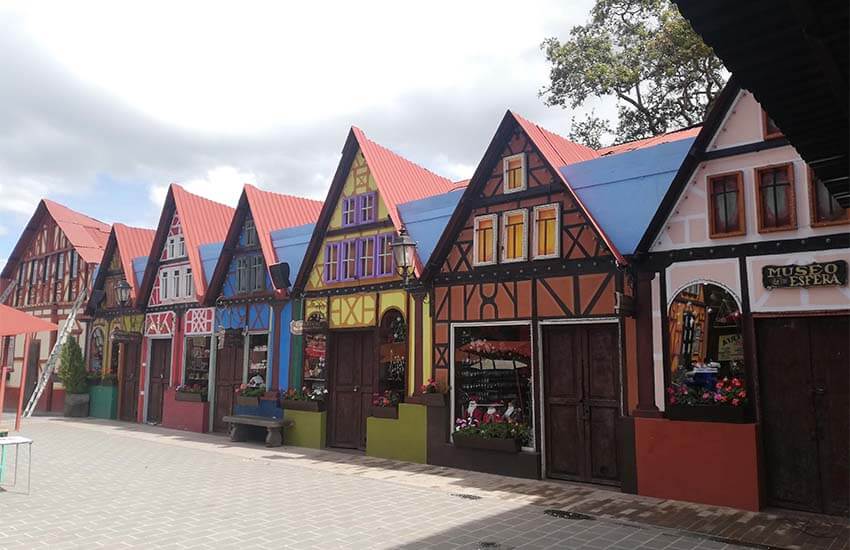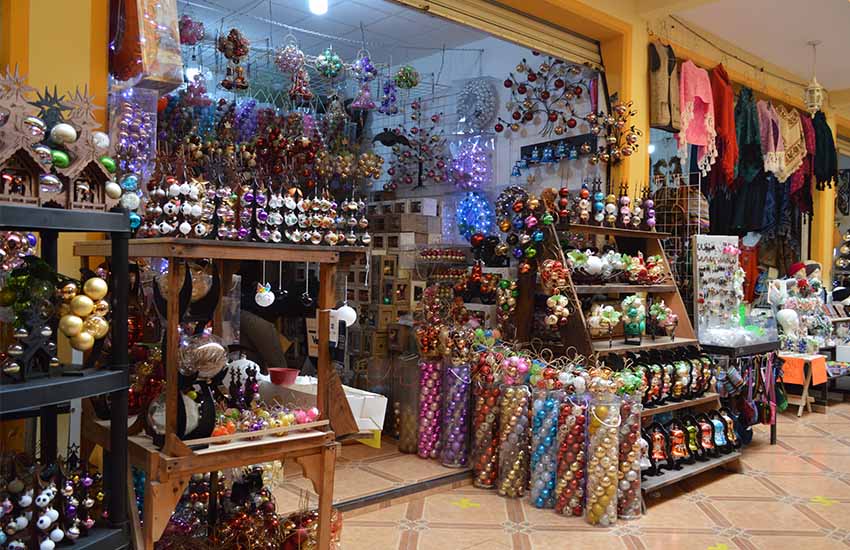If you buy blown-glass Christmas tree ornaments made in Mexico, it’s almost guaranteed that they were made in one of two towns you probably never heard of: Tlalpujahua, Michoacán, or Chignahuapan, Puebla.
The story of these towns begins in the 1950s when economics forced many out of the high mountains of the Michoacán-México state border. Joaquin Muñoz Orta found himself an immigrant in Chicago, working in a factory making artificial Christmas trees and glass ornaments. He returned to Mexico in the 1960s to make both in Mexico City, but the ornaments sold much better.
In the early 1970s, he decided to move their manufacture to his hometown of Tlalpujahua, the start of his company Adornos Navideños. At the factory’s height, it was making about 100 million ornaments a year, but competition from Asia put a squeeze on mass production in Mexico. The factory closed in 2012, but not before it spurred a major cottage industry.
Ornaments remain extremely important in Tlalpujahua, employing about 70% of the families in one way or another. However, there have been changes, mostly in the direction of tourism. Tlalpujahua is a natural “Christmas town,” a weekend drive from Mexico City, San Miguel Allende and Guadalajara into rugged pine-forested mountains and cold not unlike many parts of the United States and Europe at the same time of year.
The family behind Adornos Navideños founded La Casa de Santa Claus. It produces about a million ornaments a year, but its focus is now retail in Tlalpujahua. The municipality sponsors an annual Feria de la Esfera (Ornament Fair) which is ongoing until December 19th to attract shoppers to its over 100 manufacturers that set up stalls all over town.

Mexico’s other Christmas town is Chignahuapan, Puebla, whose story begins when Tlalpujahua native Rafael Méndez Núñez set up shop here in the 1970s. Many of the products here are similar to those made in Tlalpujahua, and Chignahuapan has kept much of its wholesale business, mostly because it is easier to ship to Mexico City.
Tourism is important, although the atmosphere is different from that of Tlalpujahua.
It is an easy day trip from Mexico City and Puebla, and it has a wonderful parish church with a facade painted in bright colors. Its continued focus on wholesale is the reason why its annual fair starts and ends earlier (October–November). But don’t worry, if you go there now, you will find plenty of stores and stalls for your shopping pleasure, along with locally made apple cider and pulque.
Most of the blown-glass ornaments sold in both towns will be familiar to many of us from North America, focusing on traditional Christmas colors and with sparkly designs of stars, flowers, Santa Claus and more. Continued export explains some of this, but the main reason is that the Mexican market demands it. Christmas trees are a relatively new addition to the culture, and many Mexicans still look to recreate what they have seen in the media.
The vast majority of producers maintain the techniques of small workshops and factories. including blowing and hand-painting, which is usually done by women.
However, there are signs of innovation, especially in the decoration of the basic sphere. Wild colors and new images appear, mostly because of influences from popular culture. It is easy to find ornaments with logos from Mexican and U.S. sports teams, famous players, superheroes, Japanese cartoon characters and more. (I would not ask if they have permission to reproduce these images, however.)

There has been the development of blown glass in new shapes such as flower petals and hot-air balloons, along with apples and other fruit. Transparent spheres with items inside are also popular, and you can even have one with your own photo inside made while you wait.
Both towns have developed other Christmas decorations, including interesting takes on wreaths, nativity scenes and “trees” made from pine cones and other local forest products. But for the most part, it has not led to the development of collectible ornaments in (Mexican) folkloric designs similar to what can be seen in North America and Europe.
With the end of the mass production export market, federal and state governments have stepped in to promote the two towns and their products. It is important to keep the industry from dying completely as it is about the only major economic activity in either. Ornaments from both places have appeared on Christmas trees at the Vatican, and both are designated as Pueblos Mágicos — in large part but not exclusively because of their history with Christmas.
While both Tlalpujahua and Chignahuapan are the closest to Christmas towns in our sense of the term, there are also other places worth a mention with a strong connection to the holiday.
The first is Acolman, México state. Just north of the Mexico City metropolitan area, it is the birthplace of the Mexican piñata, developed at the monastery here. It holds an annual Piñata Fair, this year happening December 16—20.
Live and cut Christmas trees are now cultivated in many of Mexico’s high-altitude and colder climes, particularly in México state, Nuevo León, Michoacán and Veracruz. These farms welcome visitors during the season.

The best known is the Bosque de los Árboles de Navidad, or Christmas Tree Forest, wedged between Mexico City and the Popocatepetl Volcano in Amecameca, México state.
In case you didn’t know, the poinsettia is native to Mexico and called in Spanish the “Nochebuena” (which is also the word for “Christmas Eve”).
Morelos is a principal producer of the plant, and Cuernavaca holds an annual Expo Nochebuena from now until December 24.
Leigh Thelmadatter arrived in Mexico 18 years ago and fell in love with the land and the culture in particular its handcrafts and art. She is the author of Mexican Cartonería: Paper, Paste and Fiesta (Schiffer 2019). Her culture column appears regularly on Mexico News Daily.
